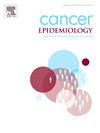Squamous cell carcinoma: Dynamics and prediction of relative survival revealed using model-based period analysis
IF 2.3
3区 医学
Q3 ONCOLOGY
引用次数: 0
Abstract
Background
Squamous cell carcinoma (SCC) is a common and aggressive malignancy, often diagnosed at advanced stages with a high tendency for lymph node metastasis, leading to poor prognosis. Understanding current survival rates is crucial, as analyzing SCC survival trends helps identify prognostic factors, evaluate treatment effectiveness, and guide clinical decision-making to improve patient outcomes.
Methods
Period analyses were used to examine the relative survival rates and trends in patients with SCC from the Surveillance, Epidemiology, and End Results (SEER) database (2000–2019). In addition, generalized linear models based on data stratified by age, race, sex, area, stage, and subtype in the SEER database were created to forecast the 5-year relative survival of SCC patients from 2020 to 2024.
Results
During the observation period, different degrees of increase were reflected in the 5-year relative survival rates of overall SCC and most SCC subtypes, with the most significant improvement in small cell nonkeratinizing squamous cell carcinoma, from 38.4 % to 68.8 %. The comprehensive 5-year relative survival rates for SCC during the respective intervals of 2000–2004, 2005–2009, 2010–2014, and 2015–2019 were recorded as 44.1 %, 46.7 %, 47.8 %, and 51.5 %, sequentially. In most subtypes, women had slightly higher survival rates than men. In addition, survival rates were significantly higher in urban areas than in rural areas, lower in the elderly than in the young, and higher in white patients than in nonwhite patients, with significantly lower survival rates for SCC with distant metastases.
Conclusion
During the two decades from 2000 to 2019, we observed a general trend of gradual improvement in the survival rate of SCC patients. This upward trend is expected to continue during the five-year period 2020–2024, according to projections. Through an in-depth assessment of the status of SCC patients over the past two decades, we can better predict the future trend of SCC. This not only provides a scientific basis for the relevant authorities, but also provides strong support for the development of effective tumor prevention and control strategies.
鳞状细胞癌:动态和预测使用基于模型的周期分析揭示相对生存
鳞状细胞癌(SCC)是一种常见的侵袭性恶性肿瘤,常在晚期诊断,淋巴结转移倾向高,预后差。了解当前的生存率是至关重要的,因为分析SCC的生存趋势有助于确定预后因素,评估治疗效果,指导临床决策以改善患者的预后。方法采用周期分析方法,从监测、流行病学和最终结果(SEER)数据库(2000-2019)中检查SCC患者的相对生存率和趋势。此外,基于SEER数据库中按年龄、种族、性别、地区、分期和亚型分层的数据,建立广义线性模型,预测2020年至2024年SCC患者的5年相对生存率。结果在观察期内,总体SCC和大多数SCC亚型的5年相对生存率均有不同程度的提高,其中小细胞非角化鳞状细胞癌的5年相对生存率提高最为显著,从38.4% %提高到68.8% %。2000-2004年、2005-2009年、2010-2014年和2015-2019年期间SCC的综合5年相对生存率依次为44.1% %、46.7 %、47.8 %和51.5 %。在大多数亚型中,女性的存活率略高于男性。此外,城市地区的生存率明显高于农村地区,老年人的生存率低于年轻人,白人患者的生存率高于非白人患者,伴有远处转移的SCC的生存率明显低于非白人患者。结论从2000年到2019年的20年间,我们观察到SCC患者的生存率逐渐提高的总体趋势。根据预测,这一上升趋势预计将在2020-2024年的五年期间持续下去。通过对近二十年来SCC患者状况的深入评估,我们可以更好地预测SCC的未来趋势。这不仅为相关部门提供了科学依据,也为制定有效的肿瘤防治策略提供了有力支持。
本文章由计算机程序翻译,如有差异,请以英文原文为准。
求助全文
约1分钟内获得全文
求助全文
来源期刊

Cancer Epidemiology
医学-肿瘤学
CiteScore
4.50
自引率
3.80%
发文量
200
审稿时长
39 days
期刊介绍:
Cancer Epidemiology is dedicated to increasing understanding about cancer causes, prevention and control. The scope of the journal embraces all aspects of cancer epidemiology including:
• Descriptive epidemiology
• Studies of risk factors for disease initiation, development and prognosis
• Screening and early detection
• Prevention and control
• Methodological issues
The journal publishes original research articles (full length and short reports), systematic reviews and meta-analyses, editorials, commentaries and letters to the editor commenting on previously published research.
 求助内容:
求助内容: 应助结果提醒方式:
应助结果提醒方式:


